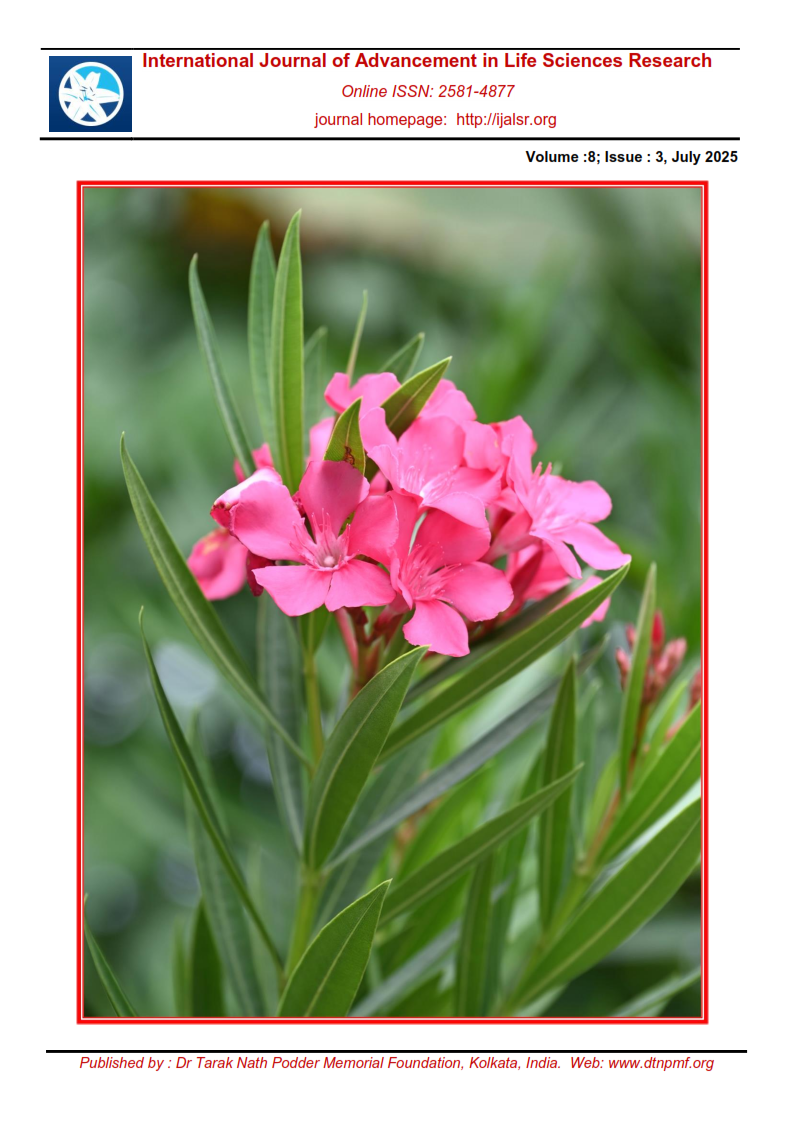Detection of Drug-Related Problems Associated with High-Risk Medications in a Clinical Setting – A Prospective Study
Abstract
Background: Drug-Related Problems (DRPs) associated with High-Risk Medications (HRMs) present significant challenges in clinical practice, particularly among older adults with multiple comorbidities. This study aimed to identify, classify, and address DRPs in patients prescribed HRMs at a tertiary care hospital in Kerala. Methods: A prospective interventional study was conducted over ten months, enrolling 201 patients aged 18 years and above, of whom 193 completed the protocol. Prescriptions involving HRMs from the cardiology, neurology, general medicine, and psychiatry departments were reviewed using the APS-Doc framework to classify DRPs. Pharmacist-led interventions were implemented to resolve identified issues, including dosage adjustments, drug substitutions, and enhanced patient monitoring. Results: A total of 233 DRPs were identified, with potential drug-drug interactions (61.8%) being the most prevalent, followed by actual interactions (17.6%). Ten Adverse Drug Reactions (ADRs) were reported, with Verapamil causing the most frequent reaction (peripheral oedema). Overall, 198 interventions (85%) were accepted by physicians and implemented, contributing to improved medication safety and therapeutic outcomes. Conclusion: The study highlighted the critical need for systematic prescription review, interdisciplinary collaboration, and proactive clinical pharmacist involvement to enhance the safety of HRMs. The APS-Doc framework proved effective in identifying and addressing DRPs, emphasising its potential for broader adoption in similar clinical settings. Future multicentre research is needed to validate these findings across diverse patient populations.
Downloads
References
Donnelly, M., Fang, L., Madabushi, R., Zhu, H., Luke, M., Canterbury, C., ... & Zhao, L. (2025). Narrow Therapeutic Index Drugs: FDA Experience, Views, and Operations. Clinical Pharmacology & Therapeutics, 117(1), 116-129. https://doi.org/10.1002/cpt.3460.
Ghimire, R., Prasad, P., Parajuli, S., Basnet, R., Lamichhane, P., Poudel, N., ... & Mudvari, A. (2022). Potential drug-drug interaction among the patients admitted in Intensive Care Units of a tertiary care centre: A descriptive cross-sectional study. JNMA: Journal of the Nepal Medical Association, 60(247), 263-267. https://doi.org/10.31729/jnma.7137
Hodkinson, A., Tyler, N., Ashcroft, D. M., Keers, R. N., Khan, K., Phipps, D., Abuzour, A., Bower, P., Avery, A., Campbell, S., & Panagioti, M. (2020). Preventable medication harm across health care settings: A systematic review and meta-analysis. BMC Medicine, 18(1), 313.https://doi.org/10.1186/s12916-020-01774-9
Hohmann, C., Eickhoff, C., Klotz, J. M., Schulz, M., & Radziwill, R. (2012). Development of a classification system for drug-related problems in the hospital setting (APS-Doc) and assessment of the inter-rater reliability: Classification system for drug-related problems in the hospital setting (APS-Doc). Journal of Clinical Pharmacy and Therapeutics, 37(3), 276–281. https://doi.org/10.1111/j.1365-2710.2011.01281.x
Huang, Y. T., Steptoe, A., Wei, L., & Zaninotto, P. (2021). The impact of high-risk medications on mortality risk among older adults with polypharmacy: Evidence from the English Longitudinal Study of Ageing. BMC Medicine, 19, 1-13.https://doi.org/10.1186/s12916-021-02192-1
Institute for Safe Medication Practices (ISMP). (2024). ISMP high-alert medications: Acute care setting. Institute for Safe Medication Practices. https://www.ismp.org/recommendations/high-alert-medications-acute-list
Jayakumar, A., Abraham, A. S., Kumar, S., Chand, S., George, S. M., Joel, J. J., & Up, N. (2021). Critical analysis of drug related problems among inpatients in the psychiatry department of a tertiary care teaching hospital: A pharmacist led initiative. Clinical Epidemiology and Global Health, 11, 100743.https://doi.org/10.1016/j.cegh.2021.100743
Leahy, I. C., Staffa, S. J., Charolia, S., Baier, A. W., Richards, M., & Brustowicz, R. M. (2024). Enhancing medication safety: Description of characteristics of medication errors and effectiveness of quality improvement strategies. JCA Advances, 1(3-4), 100073.https://doi.org/10.1016/j.jcadva.2024.100073.
Lekpittaya, N., Kocharoen, S., Angkanavisul, J., Siriudompas, T., Montakantikul, P., & Paiboonvong, T. (2024). Drug-related problems identified by clinical pharmacists in an academic medical centre in Thailand. Journal of Pharmaceutical Policy and Practice, 17(1), 2288603.https://doi.org/10.1080/20523211.2023.2288603.
Niu, J., Straubinger, R. M., & Mager, D. E. (2019). Pharmacodynamic Drug-Drug Interactions. Clinical Pharmacology and Therapeutics, 105(6), 1395–1406. https://doi.org/10.1002/cpt.1434
Prasad, N., Lau, E. C., Wojt, I., Penm, J., Dai, Z., & Tan, E. C. (2024). Prevalence of and risk factors for drug-related readmissions in older adults: a systematic review and meta-analysis. Drugs & Aging, 41(1), 1-11.https://doi.org/10.1007/s40266-023-01076-8
Subbaiah, M. V., Babu, K. L. P., Manohar, D., Sumalatha, A., Mohammed, P., & Mahitha, B. (2021). Drug utilization evaluation of high alert medications in intensive care units of tertiary care teaching hospital. Journal of Drug Delivery and Therapeutics, 11, 94–101. https://doi.org/10.22270/jddt.v11i1-s.4749
Sunny, M., K, N., Aathif, M., Subramanya, C., Chand, S., U.P., N., & Chacko, C.S. (2022). Assessment of drug-related problems among geriatric inpatients: an APS-doc classification system-based study. Aging Medicine and Healthcare, 13(4), 163-169. https://doi.org/10.33879 /amh.134.2021.07069

This work is licensed under a Creative Commons Attribution-NonCommercial 4.0 International License.


















 .
.